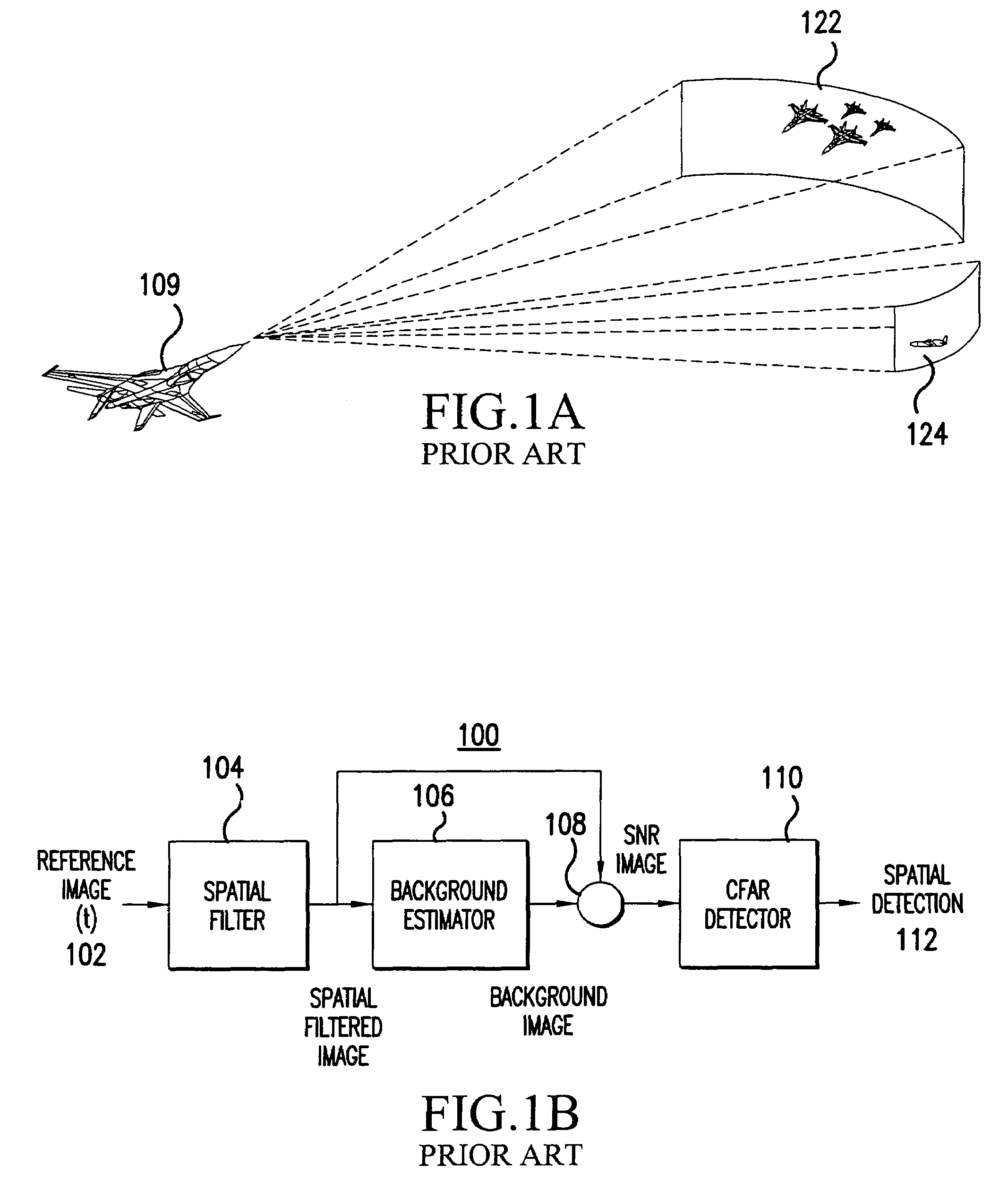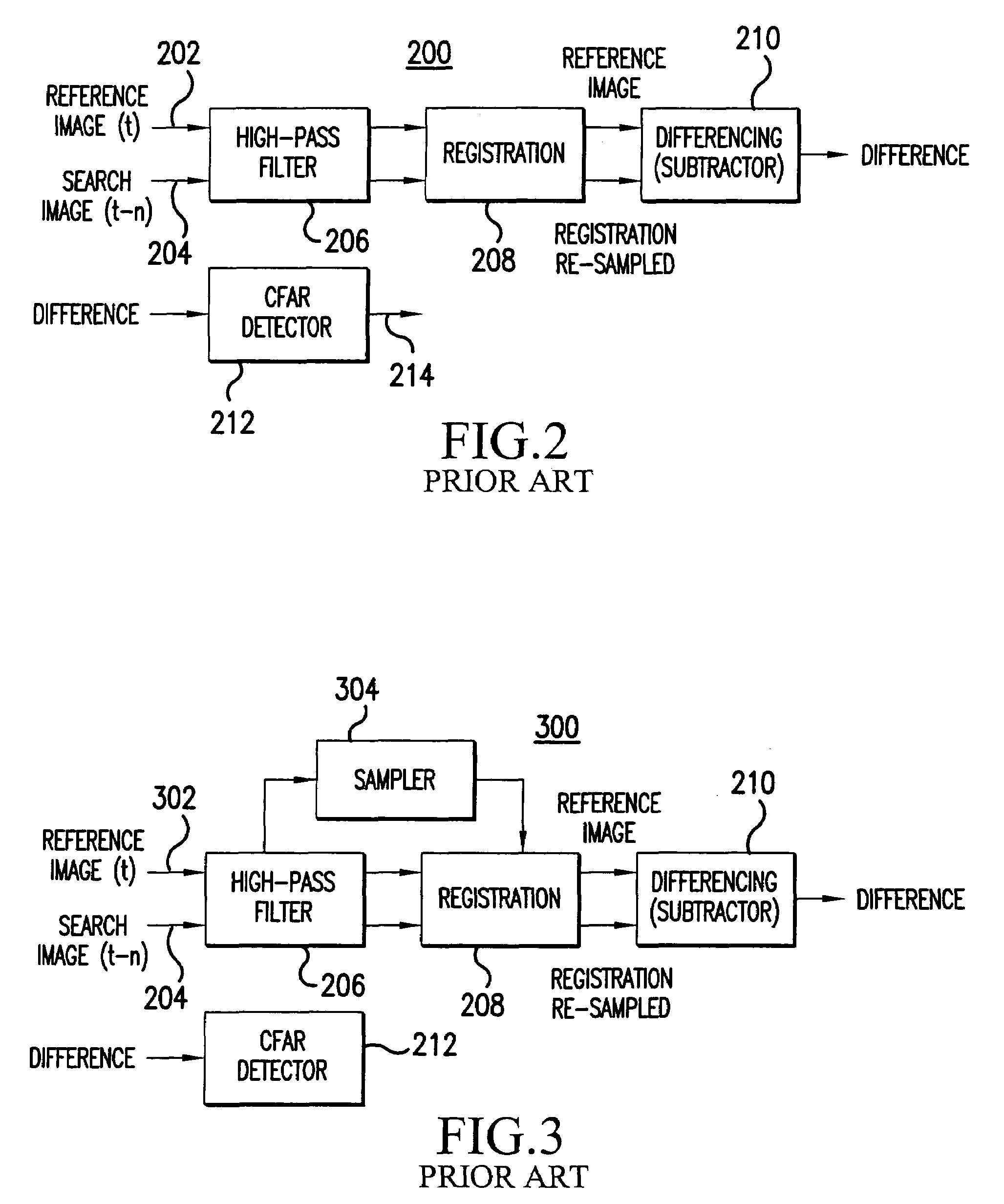Method and system for improved unresolved target detection using multiple frame association
a target detection and multiple frame association technology, applied in the field of image processing, can solve the problems of reducing the probability of detection for low clutter sub-regions, spatialirst may produce a large number of false alarms, and high false alarm probability, so as to achieve low clutter, high clutter, and high clutter
- Summary
- Abstract
- Description
- Claims
- Application Information
AI Technical Summary
Benefits of technology
Problems solved by technology
Method used
Image
Examples
Embodiment Construction
[0043]In order to facilitate the reader's understanding of the present invention, the following list of acronyms and their generally accepted meanings are provided:[0044]Ac—Angle from center[0045]CFAR—Constant False Alarm Rate[0046]FOR—Field of Regard[0047]FOV—Field of View[0048]FPA—Focal Plane Array[0049]IR—Infrared[0050]IRST—Infrared Search and Track[0051]LOS—Line of Sight[0052]MFA—Multiple-Frame-Association[0053]MTI—Moving Target Indicator[0054]NEDT—Noise-Equivalent Temperature Difference[0055]Pd—Probability of Detection[0056]Pfa—Probability of False-Alarm[0057]PSF—Point spread function[0058]ROC—Receiver Operating Characteristics[0059]RT—Re-visit Time[0060]SMF—Small Military Fighter[0061]S / N—Signal-to-Noise Ratio[0062]STD—Spot Time-Differencing[0063]μFlicks—A measure of radiance
[0064]Referring now to FIG. 7, an improved IRST detection processor 400′ is shown. The improved IRST detection processor 400′ of FIG. 7 is similar to the IRST detection processor 400 of FIG. 4, and similar...
PUM
 Login to View More
Login to View More Abstract
Description
Claims
Application Information
 Login to View More
Login to View More - R&D
- Intellectual Property
- Life Sciences
- Materials
- Tech Scout
- Unparalleled Data Quality
- Higher Quality Content
- 60% Fewer Hallucinations
Browse by: Latest US Patents, China's latest patents, Technical Efficacy Thesaurus, Application Domain, Technology Topic, Popular Technical Reports.
© 2025 PatSnap. All rights reserved.Legal|Privacy policy|Modern Slavery Act Transparency Statement|Sitemap|About US| Contact US: help@patsnap.com



